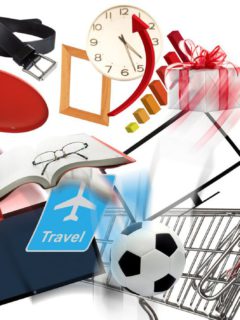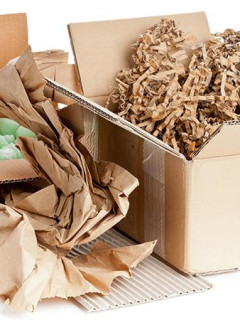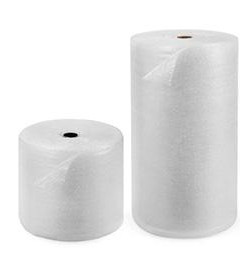There are a number of different environmental labels, and they have different meanings. In this article, we look at some of the environmental labels available on the European market and explain what they mean
Overview of eco-labels
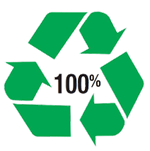
These arrows, based on the mathematical figure of the Möbius strip, are the most popular eco-label in packaging in Europe. In a 2020 survey, 86% of consumers said they recognised this logo as a sign that packaging is recyclable.
The number inside the loop indicates the percentage of recycled material that the end product is made of. The logo was designed in the late 1970s by American Gary Anderson, and is now used worldwide as a symbol of recycling.
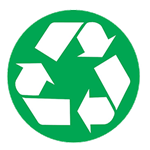
This symbol, which is a variant of the same mark, indicates that the packaging or product is fully recyclable. This variant is mainly used on packaging made of paper or cardboard.
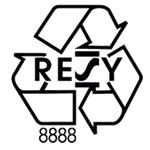
The RESY symbol can be found on paper or cardboard packaging from Germany. It guarantees that the packaging is made of recycled material and can be recycled afterwards. The number under the arrows indicates a number of the producer or supplier.
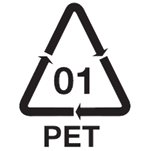
This symbol is used in recyclable plastic packaging. The number indicates the type of plastic the packaging is made of. It can help consumers to properly source separate, which contributes to better recycling.
See an overview of different types of plastic on RAJA’s Dutch blog
In addition to the brands mentioned above based on the Möbius strip symbol, there are many other official logos and symbols that indicate the environmentally friendly properties of packaging. The most important are:
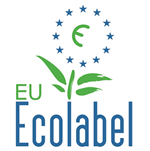
This is a quality label that the EU has awarded to products that are better for the environment – without sacrificing quality. Due to the very strict requirements, only 10% to 20% of the products on the European market can carry this label. Examples of this at RAJA are our drying paper and copy paper.

The Swan label is the official Nordic eco-label, established by the Nordic Council of Ministers. The purpose of the Swan label is twofold: to stimulate producers to make environmentally adapted goods and services, and to make it easy for consumers to make good environmental choices. 94% of the Norwegian population knows about the Swan label (2014). A product or service that is Swan labelled, has undergone an objective environmental assessment. To be eligible for the Swan label, the entire life cycle of the product or service must be as environmentally adapted as possible, all the way from raw material – to production – via use – to waste management. Among RAJA’s products that are Swan labelled, are our paper envelopes.
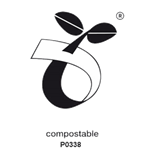
This logo has been developed by European Bioplastics, the umbrella organisation for bioplastics producers. Products with this label can be composted, but only under industrial conditions*. The seedling logo is only valid when the code of the label holder is also mentioned. It always starts with the letter P, followed by 4 digits.
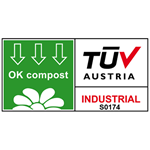
The label OK Compost states that a product is 90% degradable and will be composted (within 6 months). The term “INDUSTRIAL” means that composting is only possible in industrial conditions. This label is only valid when the code of the plant owner is also mentioned. It always starts with the letter S, followed by 4 digits. With the same code you can get additional information about the product via the TÜV website.
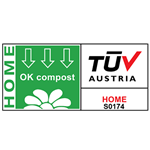
This logo is used for products that you can compost yourself at home. Hence the word ‘HOME’. The current products must be at least 90% biodegradable (within 6 months) and must not contain heavy metal residues. This label is only valid when the code of the licensee is also mentioned. This code always starts with the letter S, followed by 4 digits. With the same code you can get additional information about the product via the TÜV website.
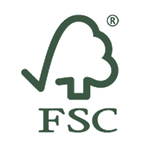
FSC is an organisation that ensures that forests are managed in a responsible way globally. FSC has the same set of rules all over the world. Packages of paper or wood can carry this logo if they are at least 70% made of certified material. RAJA has this mark on our postal bags, export boxes and paper envelopes.
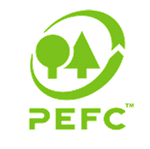
PEFC stands for Programme for the Endorsement of Forest Certification. Products with this logo are at least 70% made of paper or wood that comes from responsibly managed forests. It differs from the FSC logo because the certification is done on the basis of ISO standards.
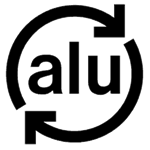
This symbol confirms that there is recyclable aluminium in the product. Sometimes the arrow inside simply says “AL”, which is the chemical name for aluminium. This is an optional logo that does not say anything about the proportion of recycled aluminium in the packaging.
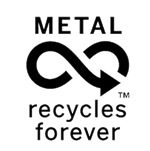
This mark means that the packaging is made (in whole or in part) of recyclable metal. Magnets allow this packaging to be sorted out of waste and melted down into new end products. The logo has been developed and controlled by the organisation Metal Packaging Europe.
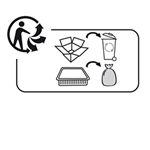
The triangle symbol (top left of the image) originates from a French law and indicates that the packaging can be recycled. In addition, it indicates which part of the packaging can be recycled and how the consumer should sort this material.
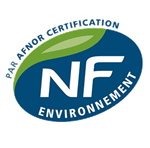
This is a French label for sustainable products (introduced in 1991). It guarantees that production is carried out in an environmentally friendly way, without compromising the quality of the end product. The label is managed by the Association française de normalisation (AFNOR), the French organisation responsible for standardisation.
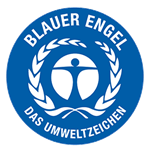
Der Blauer Engel is a German label for environmentally friendly products, introduced in 1978. The label guarantees that the products and/or services in question are environmentally friendly. The label is laid down in German law and is the responsibility of the German Environment Ministry.
Why should you eco-label your packaging?
Eco-labelling contributes positively to your customer experience, brand and business reputation. It is about meeting customer expectations. Customers are increasingly aware of the environmental impact of the products they buy and the packaging they are packed in. By labelling your packaging with eco-labels that customers know, you make it easier for customers to make the right choices.
A European study conducted by DS Smith confirms that carrying capacity is a decisive factor in consumers’ decisions. Some of the results are summarised below:
- 64% of consumers are willing to shop elsewhere if less packaging is used there
- 29% of consumers would stop buying a brand if the packaging was not sustainable enough
- 38% of consumers take packaging labels into account when buying from a physical store
Another consumer survey from 2018 showed that 52% of European consumers actively look for products that are packaged in an environmentally friendly way. However, it can be difficult for consumers to determine how sustainable packaging really is. Thus, eco-labels are an important tool to make the right choice.
Furthermore, the same study showed that only 9% of European consumers consider plastic as an environmentally friendly form of packaging. However, many consumers forget that there is also a lot of recycled plastic in circulation today.
By using eco-labels on your packaging, you give customers useful information. They appreciate that!
Want to know more?
Check out some tips for environmentally friendly packaging here, or contact RAJA’s packaging specialists on 22 51 40 00 or post@rajapack.no.
See also RAJA’s environmentally friendly packaging products.












